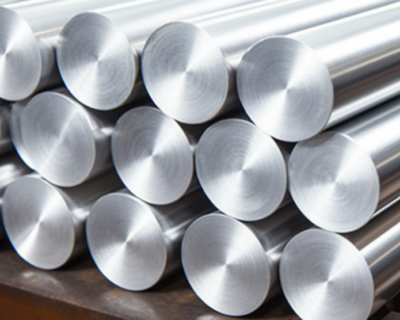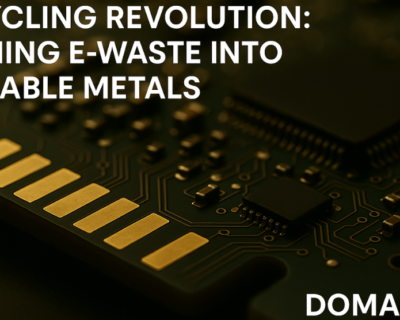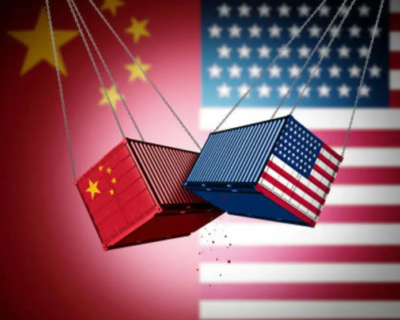Blogs

How Geopolitics is Reshaping the Global Metal Market
Introduction: When Politics Meets the Periodic Table
In today’s interconnected world, metal markets are no longer driven purely by supply, demand, and technology—they’re being reshaped by geopolitics. From trade wars and sanctions to regional conflicts and resource nationalism, political forces now move metal prices as much as mining drills do.
A single political decision in one corner of the world can send ripples across industries thousands of miles away. When a key producer imposes export restrictions, prices spike. When a conflict breaks out, shipping routes collapse. And when resource-rich nations tighten control, global supply chains scramble to adapt.
Welcome to the age where metals are not just commodities—they’re instruments of power.
The Geopolitical Pulse of Metals
The global metal market sits at the intersection of industrial growth and political tension. As nations race toward clean energy and digital transformation, their hunger for critical metals—like copper, nickel, lithium, and rare earth elements—has intensified. But the path to securing these resources is increasingly shaped by politics, not geology.
Here’s how geopolitics is rewriting the rules of the metal market:
Supply Chain Disruptions: When Wars Block the Flow
Conflicts like the Russia–Ukraine war have reshaped the flow of global resources. The halt in production and export routes caused shortages and price spikes in aluminum, steel, and copper—metals essential to construction, transportation, and electronics.
With ports blocked and logistics re-routed, manufacturers had to hunt for alternative suppliers, often at a higher cost. This pattern echoes across other conflicts and crises, from Africa’s mining strikes to Southeast Asia’s export restrictions.
Trade Wars & Tariffs: The Ripple Effect of Protectionism
Remember the U.S. steel and aluminum tariffs of 2018? Those measures triggered price surges and forced global manufacturers to reorganize their sourcing. Similar trade tensions today—especially between the U.S. and China—continue to reshape the global metal landscape.
Every tariff, quota, or import restriction sets off a domino effect: altered supply chains, new trade alliances, and unpredictable pricing.
Sanctions & Embargoes: Politics as a Pressure Tool
When governments impose sanctions—as seen with Russia’s nickel and rare earth exports in 2024—markets respond instantly. Sanctions on countries like Iran and Venezuela have previously created supply gaps that ripple through entire sectors.
In essence, metals become diplomatic weapons—used to reward allies and pressure adversaries.
Resource Nationalism & Political Instability: Control vs. Chaos
In many regions, governments are tightening control over their natural resources, a trend known as resource nationalism. Countries like Indonesia, for instance, have restricted nickel exports to encourage local processing.
Meanwhile, political instability in mineral-rich nations—strikes, regime changes, or civil unrest—can shut down mines overnight. When one region falters, the entire global market feels the tremor.
Concentrated Production: The China Factor
While minerals are found worldwide, processing is not. China, for example, dominates the refining and processing of rare earth elements, which are vital for EVs, wind turbines, and smartphones.
This concentration of production makes the global market vulnerable. Any policy change or export ban from China can send shockwaves through industries dependent on clean energy materials.
Energy Geopolitics: When Oil and Metals Intertwine
Metal production is energy-intensive, relying heavily on stable power and fuel costs. So, when oil and gas prices fluctuate due to conflicts in the Middle East or other regions, the cost of metal production rises too.
Simply put, when geopolitics affects energy, it indirectly reshapes the cost of every mined, melted, and manufactured metal on Earth.
The Fallout: How Industries Are Coping
1. Price Volatility
From copper to nickel, prices are increasingly erratic. Sanctions, wars, and tariffs create rapid fluctuations, challenging long-term planning for manufacturers.
2. Shifting Demand Patterns
Companies are diversifying sourcing—seeking new suppliers or even reshoring production to mitigate risks. For example, the EU and U.S. are now funding local refining of critical minerals to reduce dependence on foreign supply chains.
3. Strategic Risk Management
Corporations have become more proactive, employing data analytics and geopolitical monitoring to forecast risks. Long-term contracts, stockpiling, and diversification are now standard playbooks in the metal trade.
4. Environmental & Ethical Implications
Frequent disruptions also have environmental costs. Every shutdown, re-route, and re-mining effort increases emissions and waste. Thus, supply chain stability isn’t just an economic goal—it’s an environmental one.
Conclusion: The New Era of Metal Diplomacy
The global metal market is no longer just about extraction—it’s about negotiation.
Geopolitical decisions now dictate where metals come from, how they move, and who controls their flow. As countries and corporations race to secure critical resources for the clean energy transition, adaptability and foresight have become the true metals of value.
In this new age of uncertainty, one thing is clear: those who understand the geopolitical pulse of metals will hold the key to economic stability and sustainability.
Stay Ahead of Global Shifts — Partner with DOMADIA™ for Reliable Metal Solutions.
👉 Explore our products and insights at domadia.net
Talk to us: Kairav Domadia | Aadil Domadia | Er.Pankaj Domadia | Pragati Sanap | Pooja N N
#Geopolitics #MetalMarket #SupplyChain #RareEarths #EnergyTransition #TradeWars #GlobalEconomy #CriticalMetals #CommodityMarkets #DOMADIA




